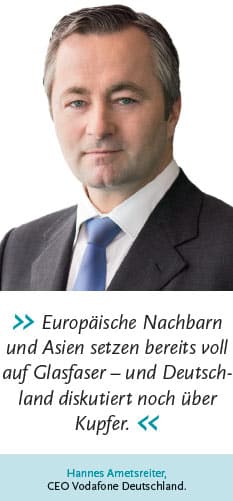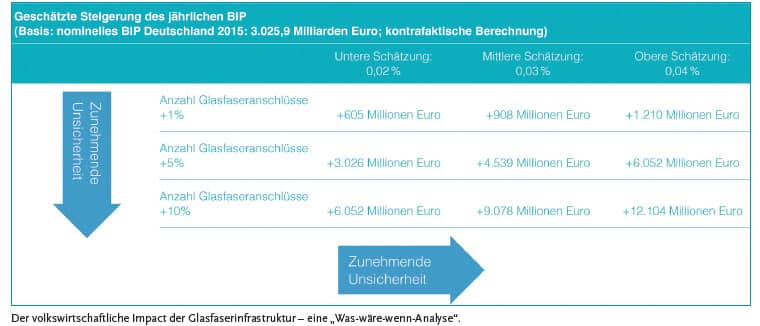![[shutterstock.com:291272936, ra2studio]](https://e3mag.com/wp-content/uploads/2017/06/shutterstock_291272936.jpg)

In order to remain internationally competitive in the future, Germany must rely on an extremely efficient network infrastructure.
According to the "Gigabit Society" study, the performance of broadband networks correlates positively and statistically highly significantly with economic growth: on average, a one percent increase in average speed in the countries considered is associated with a 0.07 percent increase in GDP.
Converted, this means that a one percent increase in the current speed in Germany would be accompanied by an increase in GDP of just under 2 billion euros.
 In addition, increasing a country's fiber deployment by one percent per year shows an increase in gross domestic product (GDP) of 0.02 to 0.04 percent per year.
In addition, increasing a country's fiber deployment by one percent per year shows an increase in gross domestic product (GDP) of 0.02 to 0.04 percent per year.
For Germany, this would mean an increase in GDP of between 600 million and 1.2 billion euros. At the end of 2015, only around 60 percent of businesses in Germany had broadband connections with at least 50 Mbit/s.
In the foreseeable future, this may lead to a significant locational disadvantage for the domestic economy.
In total, the study identifies 17 key technologies that will significantly shape a gigabit society and verifies them based on patent publications from 2006 to 2015, including, for example, robotics, holography, 3D printing, imaging and gaming.
Inventors from Germany recognized and addressed these issues early on. In almost all key technologies, Germany is among the top five in terms of patent applications.
It is also apparent that the key gigabit technologies are linked to numerous application areas. These include digital agriculture, digital living environments (e.g. home robotics, e-commerce, e-wallet, e-payment, etc.), digital government and administration, smart health, energy generation and smart mobility.
In a comparison of average connection speeds (Akamai, 2016), Germany is only in 13th place with 12.9 Mbit/s. The leader here is South Korea (26.7 Mbit/s), ahead of Sweden (19.1) and Norway (18.8). The leader here is South Korea (26.7 Mbit/s), ahead of Sweden (19.1) and Norway (18.8).
Analysis of the relevant literature shows that there is no end in sight to the hunger for data in the coming years. Demand for more bandwidth is on the rise. As a rule, the drivers are not the familiar applications, but the key digital technologies and the markets of the future.






